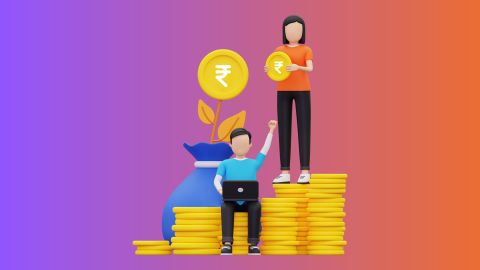India’s road towards becoming one of the world’s largest economies seems to be clearing up. Amidst several challenges such as the falling value of the rupee, trade war between the US and China, India seems to be silently triumphing on the economic front. According to the World Bank, it is expected to clock in at a growth rate of 7.3% this year.
The international financial institution has forecasted India’s growth rate to be 7.5% for the next two years, making it the fastest-growing economy globally, while China’s growth rate seems to be slowing down. It has dropped from 6.9% in 2017 to 6.2% in 2020.
The realisation of these predictions depends upon several factors. Here is a list of things that might work in favour of India’s projected economic growth:
Growth through resource utilisation
India has a lot of growth potential. Its economic growth has started at a low resource utilisation compared to China, whose resource utilisation is relatively high. If the country can raise its GDP growth through better employment of excess resources with existing technologies, it will help boost the economy.
Economic reforms
The Indian government has been praised for undertaking several economic reforms such as implementing GST, a crackdown on shell firms, boosting affordable housing and bank recapitalisation.
International country credit monitoring agency, Aon has credited India for sticking to significant economic reforms like reducing taxes on import and export, loosened control on foreign investment, and removing price controls.
Additional read: Credit rating agencies in India
Participation of India’s female population in the workforce
The female half of India’s population has been a vastly untapped resource in the Indian economic story. Despite women closing the higher education gap, their labour force participation rate remains low. However, things are slowly changing, and it’s estimated that a 10% growth in women’s participation in the labour force will add USD 700 billion to the GDP by 2025.
Evolution of NBFCs
The evolution of non-banking finance companies (NBFCs) post the 2008 financial crisis and their contribution to the financial sector has positively affected the Indian economy. According to CRISIL, NBFCs are expected to witness a CAGR of 18% for the next two and half years, increasing their share in total credit to 19% by 2020.
Additional read: Can you take a personal loan and home loan simultaneously?
NBFCs, through their innovative offerings, have removed bottlenecks related to funds for SMEs, the growth engine of the Indian economy. They also offer home loan, business loan, personal loan, and loan against property to individuals at competitive interest rates, thus playing an essential role in uplifting the economy.
For instance, pre-approved offers from Bajaj Finserv on a gamut of loans, including home loans, personal loans, and business loans, make it easy to avail finance. To know your pre-approved offer, share a few basic details.
Thus, the economic future of the country looks bright in the days to come. With optimism returning to the markets, India is on its way to becoming a leading economy.
DISCLAIMER:
While care is taken to update the information, products, and services included in or available on our website and related platforms/websites, there may be inadvertent inaccuracies or typographical errors or delays in updating the information. The material contained in this site, and on associated web pages, is for reference and general information purpose and the details mentioned in the respective product/service document shall prevail in case of any inconsistency. Subscribers and users should seek professional advice before acting on the basis of the information contained herein. Please take an informed decision with respect to any product or service after going through the relevant product/service document and applicable terms and conditions. In case any inconsistencies observed, please click on reach us.
*Terms and conditions apply








